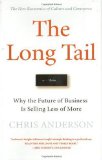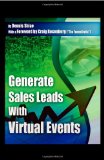Sales Lead Generation Cycle: PR’s Role
Our goal as PR professionals is to determine how our efforts impact the company’s objectives. There are lots of ways that PR is measured with regard to brand building and thought leadership. Since working in-house, I’m getting a glimpse of how PR directly impacts my organization’s sales lead generation initiative and overall sales cycle.
The crude PowerPoint representation (to left)provides a rudimentary look at the sales cycle and how PR fits into this process. This is based partially on my personal PR experience, and some insights drawn from reading MarketingSherpa’s recent report and other sources.
Simply put, there are four steps from identifying sales prospects to closing a sale with this prospect:
- Prospect: This is your target audience. These are the pool of people that you’re trying to reach and educate about your product, service or solutions.
- Lead: This is when you are able to get the contact information from your target audience. This includes completing a contact me form on your website, buying a list of names, dropping a business card at a tradeshow, and other ways.
- Qualified Lead: Even if that person proactively came to your website and requested more information, you want to confirm that the person is truly interested in considering your company. You “qualify” the lead based on what the lead wants to do and if your company can provide what she is looking for.
- Sales: Through all this effort, the ultimate goal is to finalize the sale and secure a signed contract.
There are several ways that PR fits into this process, from building awareness to influencing the sales process. Here is how some PR tactics can be leveraged throughout each phase of the sales cycle:
- Prospects – build and maintain awareness: When preparing to consider a technology solution, prospects research information on the available companies and technologies. Being able to “touch” this prospect through multiple channels is key. Media coverage, research papers, trade show presence, speaking opportunities and blogs are a good way to reach this audience.
- Leads – educate: Once a prospect becomes a lead, education is important to move the prospect to the next stage. Webinars, podcasts, and videos (not the viral type) are ways to educate your leads, while creating a personal connection with your company.
- Qualified Sales Leads – influence peer and industry: A qualified lead is someone who is in the midst of weighing different options. In addition to education, this person will look to peers and industry experts to validate her decision to move forward with you or a competitor. At this stage, social media provides a level of community validation, with customers and analysts providing third party validation for your solutions.
-
Close Sales – build community: I remember hearing that it’s easier to build business with a happy customer then trying to find new business to replace an unhappy one. Building a community helps you to hear about issues and respond to your customers, while building evangelists for your business.
In the end, each stage builds upon one another. One PR tactic, such as a feature article, may have more influence than another for a sale. However, developing a PR strategy that captures a prospect/lead at multiple points throughout the sales cycle, will have a stronger impact on that company’s business in the long run.
The more I understand PR’s role to drive this process, the better I can identify the channels by which to focus my attention on. And hopefully, identify the metrics that truly matter for underscoring PR’s impact.
Technorati Tags: lead generation marketing pr public relations sales cycle
2 Comments
Leave a comment
Additional comments powered byBackType
About
Favorite Service
Recent Comments
- on Going Virtual Isn’t Necessarily the Answer to Replacing Your Physical Events
- on Going Virtual Isn’t Necessarily the Answer to Replacing Your Physical Events
- on Going Virtual Isn’t Necessarily the Answer to Replacing Your Physical Events
- on Going Virtual Isn’t Necessarily the Answer to Replacing Your Physical Events
- on Going Virtual Isn’t Necessarily the Answer to Replacing Your Physical Events
Ads by Google
Favorite Books
Marketing Blogs
PR Blogs
- KD Paine's Measurement Blog
- Micro Persuasion
Virtual Events & Meetings Blogs
- Cisco Virtual Environments
- It's All Virtual
- The Webinar Blog
- Virtual Edge Institute

 Follow
Follow Cece Salomon-Lee is director of product marketing for Lanyon Solutions, Inc. and author of PR Meets Marketing, which explores the intersection of public relations, marketing, and social media.
Cece Salomon-Lee is director of product marketing for Lanyon Solutions, Inc. and author of PR Meets Marketing, which explores the intersection of public relations, marketing, and social media. 



@Colin, thanks for your comment. Your raise a very interesting point and I’ll explore this more.
I think you are missing a step:
PR drives visitors to your website.
Then the next step is to know the visitors by name or at least company name.
– Getting their names is only when they fill out an online form, which only 2% of all visitors will ever do. 98% stays out of reach.
– For the 98% remaining: Getting the company name is achieved by using a web service. This web service additionally defines their interest by pages visits, time on pages, returning visits and search terms used. These indications are to be used for visitor qualification – to qualify as a lead.
Once the company known and qualified as a lead, the process of contacting (cold calling) can start. However this is cold calling on warm prospects.
There are several services available: just Google “discover identify visitors”